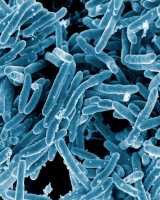Author Interviews, Brigham & Women's - Harvard, Global Health, Infections, Lancet, Pediatrics / 21.08.2019
US Pediatric Tuberculosis Rates Higher in Children Born in Endemic Countries
MedicalResearch.com Interview with:
Tori Cowger, MPH
Ph.D Student | Population Health Sciences
Department of Epidemiology
Harvard T.H. Chan School of Public Health
MedicalResearch.com: What is the background for this study?
Response: Globally, approximately one million cases of tuberculosis disease (TB) and 233,000 TB-related deaths occurred among children aged younger than 15 years during 2018. TB in children and adolescents is clinically and epidemiologically heterogeneous, making diagnosis, care, and prevention challenging. Understanding this heterogeneity can inform TB care and prevention efforts, and efforts to eliminate disparities in TB incidence and mortality in these groups.
In this study, we describe the epidemiology of TB among children and adolescents in the United States, and report TB incidence rates for US territories and freely associated states and by parental country of birth, which have not been previously described. (more…)



